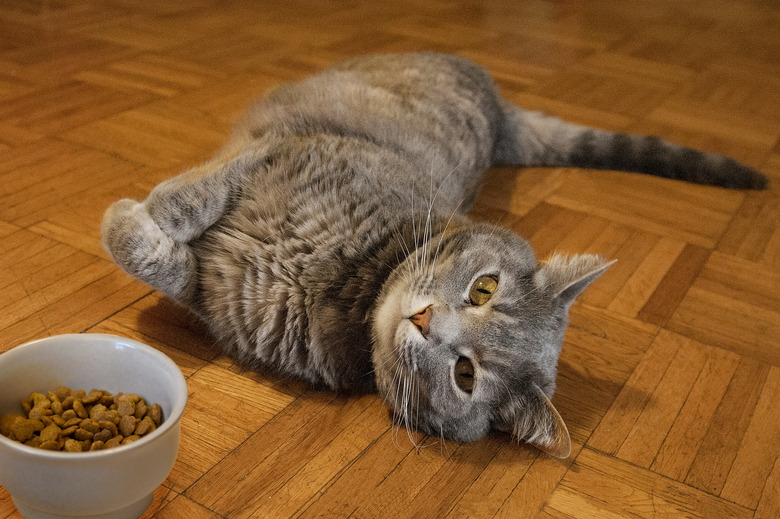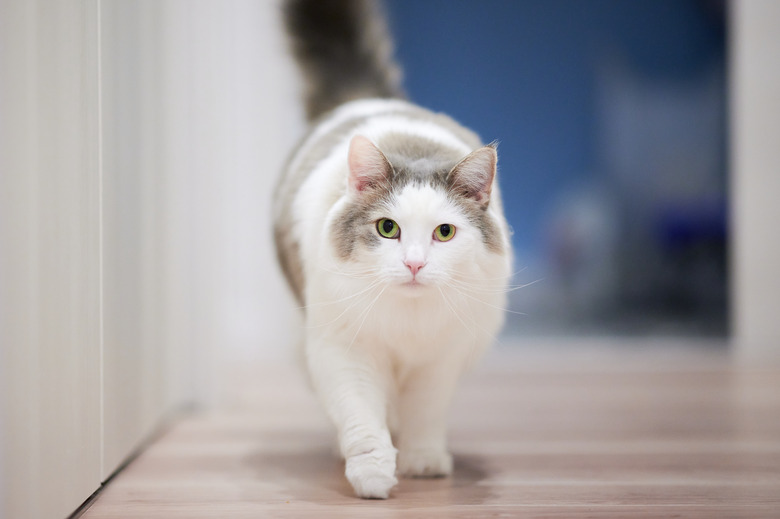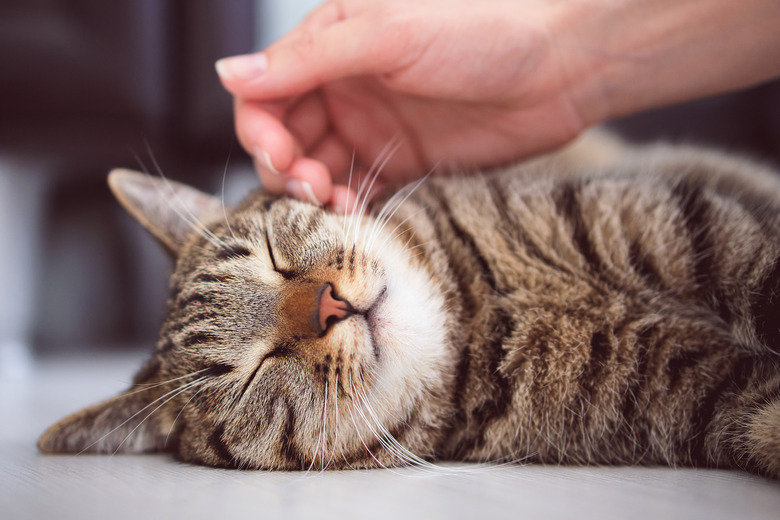What Your Cat's Body Language Is Telling You
While you may not speak fluent feline, if you've ever wondered what your cat is trying to tell you, all you need to do is check out her body language. Learn more about interpreting cat body language so that you know when she's in the mood for cuddles and play or may need a little time alone. Better communication with your cat will help you bond with her and can improve your relationship. Read on to truly understand what that twitch of your kitty's tail or blink of her eye really means.
Cat eye language
Cat eye language
What do a cat's eyes tell you? When it comes to cat body language, the eyes can tell you a lot about what's going on in her furry head. If your cat slowly blinks at you, that means that she's relaxed and that she loves and trusts you. Try returning this slow blink yourself to let her know that you love her, too.
You can also interpret cat eye body language based on the size of her pupils. Unless she's been sitting in a sunny window, if your cat's pupils are small and constricted, it could mean that she's aroused or upset. Large, fully dilated pupils can also indicate that your cat is frightened or agitated. If her pupils are either very large or very small, give her a little space and wait until her eyes return to normal. When they do, she'll be friendly and calm with you.
The tail tells the tale
The tail tells the tale
That furry tail can tell you a lot about your cat's state of mind. A common question is, "Why does my cat whip her tail?" A tail that is whipping back and forth incessantly means that your feline is highly aroused or agitated, so it's best to wait until she's a bit calmer before petting or playing with her.
If your cat approaches you with her tail standing upright or slightly curled, then it likely means she's in a friendly, happy mood. A cat who is anxious may tuck her tail downwards, between her back legs, while she walks. If you see that your cat's normally smooth tail suddenly looks like a bottle brush, all puffed up, then she is frightened or otherwise upset.
The ears have it
The ears have it
Observing the ears is important when interpreting cat body language. Not only does your cat listen with her ears, but she also communicates with them, too. If your cat's ears are standing upright, it means that she is content or listening intently to something. Flattened ears typically indicate that your cat is angry or frightened. Don't approach her if those ears of hers are flat, especially if she pulls back her whiskers and hisses as well, which are also signs she may be upset.
The fur flies
The fur flies
Cats puff up their fur when they feel threatened to make themselves look bigger to potential predators. So if you notice that your cat is puffed up and has her back arched upwards, it can mean she's riled up in some way. Try to talk in a calm voice or see if something is scaring her. If her fur is flat, she's likely feeling just fine, especially if she exposes her belly to you and rolls around in front of you — all signs of trust.
A gentle massage
A gentle massage
Young kittens knead on their mother with their little paws while nursing, which is a behavior that can sometimes continue into adulthood. A happy, contented cat may knead and massage you or other objects with her paws. If your cat starts kneading around you, this is likely cuddling body language and shows that she's relaxed. To encourage this type of friendly behavior, give her a reward like some yummy treats.
The head marks the spot
The head marks the spot
As a cat owner, you've probably experienced your cat rubbing her head against you. Your cat does this to mark you with special pheromones produced by the oil glands in her cheeks. These pheromones "mark" you as her own, a sign of love. While she marks you, she'll likely be in the mood for some snuggles and head scratches, too.
In summary
In summary
Look to your cat's ears, eyes, tail and fur when trying to read their body language. Their cues may be subtle, so look closely. Always do your best to read your cat's body language before doing something potentially stressful or something brand new with your cat.


